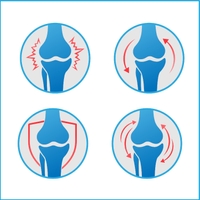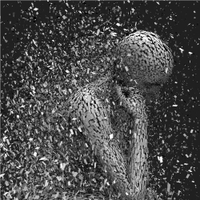
A new Australian study published in the European Journal of Pain has found that chronic pain sufferers have an imbalance in neurotransmitters in the region of the brain responsible for regulating emotions and processing acute and chronic pain (1).
More than 1 in 5 Australians aged over 45 years suffer from chronic pain (2). Chronic pain is associated with reduced quality of life, including physical and emotional functioning impairments and affective symptoms. Furthermore, more than 50% of people with chronic pain also experience major anxiety and depression disorders (3,4), and up to 90% report sleep disorders (5).
While the pathophysiology of pain is complex and not yet fully understood, it is known that the cognitive and emotional components of pain are processed by the medial prefrontal cortex (mPFC), comprising the anterior cingulate cortex, the prelimbic, and the infralimbic cortex (6). Chronic pain significantly affects all three subregions, with magnetic resonance imaging (MRI) revealing grey matter loss in all these areas in chronic pain conditions (7,8,9). Furthermore, alterations in neurotransmitter systems in the mPFC have been demonstrated in animal pain models, including alterations in the major excitatory and inhibitory neurotransmitters of the central nervous system (CNS), glutamate and gamma-aminobutyric acid (GABA), respectively (10,11,12).
In the current study, researchers used MRI to compare medial prefrontal neurochemistry in 24 people with chronic pain conditions to 24 age and sex-matched healthy controls with no history of chronic pain. In addition, psychometric measures regarding pain intensity a week before scanning, during the scan and the total duration of chronic pain were also recorded and compared to measured GABA and glutamate levels.
Significant decreases in mPFC GABA and glutamate were found in chronic pain patients compared to healthy subjects. There were no significant differences in the subset of pain patients regardless of their condition (neuropathic vs nociceptive pain), pain site (facial versus lower limb) or pain medication status (GABA analogue (e.g. pregabalin, gabapentin) medication versus non-GABA analogues).
GABA and glutamate levels were not correlated with pain duration, pain intensity during scanning, pain intensity one week prior to scanning or weekly pain intensity variance. These results suggest that glutamate and GABA levels are independent of pain intensity, pain variance and duration; instead, it is chronic pain itself that is associated with these changes.
A previous study found that levels of glutamate were lower than average in people with chronic pain, and these low glutamate levels were associated with increased emotional disturbances such as fearfulness, worriedness, pessimism and sensitivity to criticism and punishment (13). Together these studies suggest that disruption to normal excitatory and inhibitory mPFC function may contribute to both emotional disruption and the experience of persistent pain.
The mechanisms underlying this neurotransmitter dysregulation in the mPFC in chronic pain still need to be identified. However, growing evidence identifies a role of glial activation and neuroinflammation in chronic pain that can alter neurotransmitter systems thereby regulating excitatory and inhibitory transmission in the CNS (14,15). Furthermore, glial activation may be independent of pain type, for example, neuropathic and nociceptive (1).
The current study has several limitations, including the small number of participants and subject heterogeneity in pain type and location. However, it is the first study to examine the link between chronic pain and decreased levels of GABA in humans. The study findings suggest that dysregulation of glutamatergic and GABAergic neurotransmitter systems in the mPFC may be key in developing and maintaining chronic pain and comorbid mental health disorders and may be a relevant target region for therapeutic interventions.





